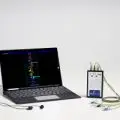Its hard to have a calm mind when faced with stress and stress manifests itself differently in every person. Some of us when under stress become irritable, restless, and unable to sleep, while others may withdraw socially, feel fatigued, lethargic and sleep for long periods of time yet never feel rested. The signs of stress are many and varied however the more common and easily recognisable signs include:
- Being emotionally reactive and oversensitive
- An inability to focus
- Finding it difficult to physically relax
- Forgetting things – especially noticeable when these are a part of your normal routine
- Not attending social functions because you feel too busy or too tired• A racing, nagging and busy mind
- Being disorganised and often late
- Excessive yawning and sighing (Have you ever noticed that you yawn or sigh quite suddenly? – this is your brain trying to attain chemical balance.)
In a nutshell, stress creates a sense of pressure, the idea that there is a lack of time, feelings of overwhelm and also, in many people, feelings of isolation and a lack of support. Stress often does another peculiar thing, the more stressed we feel, the more we tend to try to do everything on our own without asking for help. We call this the stress paradox – the more we feel like we need help, the more we resist seeking it.
So, if we feel like we are trapped in the vice of stress, what can we do to alleviate the issue? We. Can. Breathe.
HOW TO REGULATE YOUR STRESS RESPONSE WITH YOUR BREATH
When we breathe, we are absorbing what we need, which is oxygen, and dispatching what we don’t need, which is carbon dioxide. It is a simple chemical exchange.
Your body is constantly telling your brain how much oxygenand carbon dioxide is present in your blood, and your brain in return, tells your muscles to adjust your rate of breath accordingly. Have you ever noticed that you yawn or sigh quite suddenly? This is your brain trying to attain chemical balance. We lose our chemical balance when we fall into ‘shallow breathing’. This is common in office environments – either due to feeling stressed, or during daydreams and mind wandering. How often have you been at work in the afternoon, with a wandering mind and then a series of yawns and sighs follows soon after? It is likely that as your mind was drifting away, your breath became more shallow than usual and then your body had to regain the regulation, hence the yawning and sighing.
Different situations require different breathing rates. For example, if you are being chased by a lion and need to run, you will breathe differently than you would if you are standing in line waiting for your coffee.
The good news is, we can regulate our breathing, and this in turn, will regulate our stress response. The 4, 7, 8 Breathing Technique is a very handy method to help us manage acute stress and anxiety. It is simple, fast and you can use it anywhere and at any time.
HOW TO REGULATE YOUR STRESS USING 4 7 8 BREATHING

Step One: Get into a comfortable position – this can be sitting, laying down or standing.
Step Two: Push your tongue into the roof of your mouth, right where your top row of teeth are – you should be able to feel where your teeth meet the roof of your mouth.
Step Three: Take a deep, 4-second-long breath in through your nose.
Step Four: Hold this breath for 7 seconds.
Step Five: Breathe out, through pursed lips for 8 seconds. As you do this, keep your tongue pressed to the roof of your mouth where your top row of teeth can be felt. This creates a little bit of resistance to your exhale.
Step Six: Repeat 2-3 times
You should feel the difference as you naturally shift from the stress response of the sympathetic nervous system into the parasympathetic nervous system. If you a ‘stress-breather’ – meaning you naturally have shallow breathing, it is a good idea to practise 4 7 8 breathing as a matter of routine. We find our clients really benefit from incorporating it into their daily life, with many choosing to practise before bed and again in the morning.
This method of slowing down your breathing, activates the parasympathetic nervous system, naturally slowing down your heart rate and the ‘panic thoughts’ of your mind. By taking that deep breath in and holding it, the pressure in your abdominal region activates your key parasympathetic nerve, which is the nerve responsible for telling your brain to reduce the panic, fear, worry – what is more commonly known is the fight or flight response. With your breath you can contain or alleviate your stress response, however to contain it requires something more powerful than just breathing, or controlling your breath.
HOW DO I CONTAIN MY STRESS?

While breath can give you a temporary alleviation or contain it for that moment, Neurofeedback Brain Training can help you to contain an overstimulated central nervous system which controls your stress response.
Neurofeedback is an advanced for of Brain Training Technology that utilises real-time displays of brain activity through the use of electroencephalography (EEG), to teach self-regulation of brain function. It detects inconsistency and abrupt changes in the electrical activity of your brain that undermine optional functioning and informs the brain of these sudden shifts through interruptions in the sound you are listening to. This refocuses your brain’s attention to the present moment and allows your brain activity to naturally self-correct.
WHAT DO I NEED TO DO TO GET STARTED?

The first step is to get in contact with us and book in for your First Appointment. You can access a 15-minute Free Phone Consult with a member of our team who can book you in for your first session.
This will allow you to experience a Neurofeedback session, and see if its the right modality for you. We will also be able to advise you, given your presentation, whether Neurofeedback, Cognitive Behavioural Therapy (CBT) or a combination of both would give you the best result.
The team at Brain Training Australia™ recognise the unique qualities of all our clients and will work closely with you to personalise your Brain Training Program so that you can achieve your goals of optimal mental processes.
We look forward to helping you live a much richer, happier and healthier life, and to stop having a stressed, overwhelmed and busy brain.
Learn more – how we help you to self-regulate a stressed, overwhelmed and busy brain.







